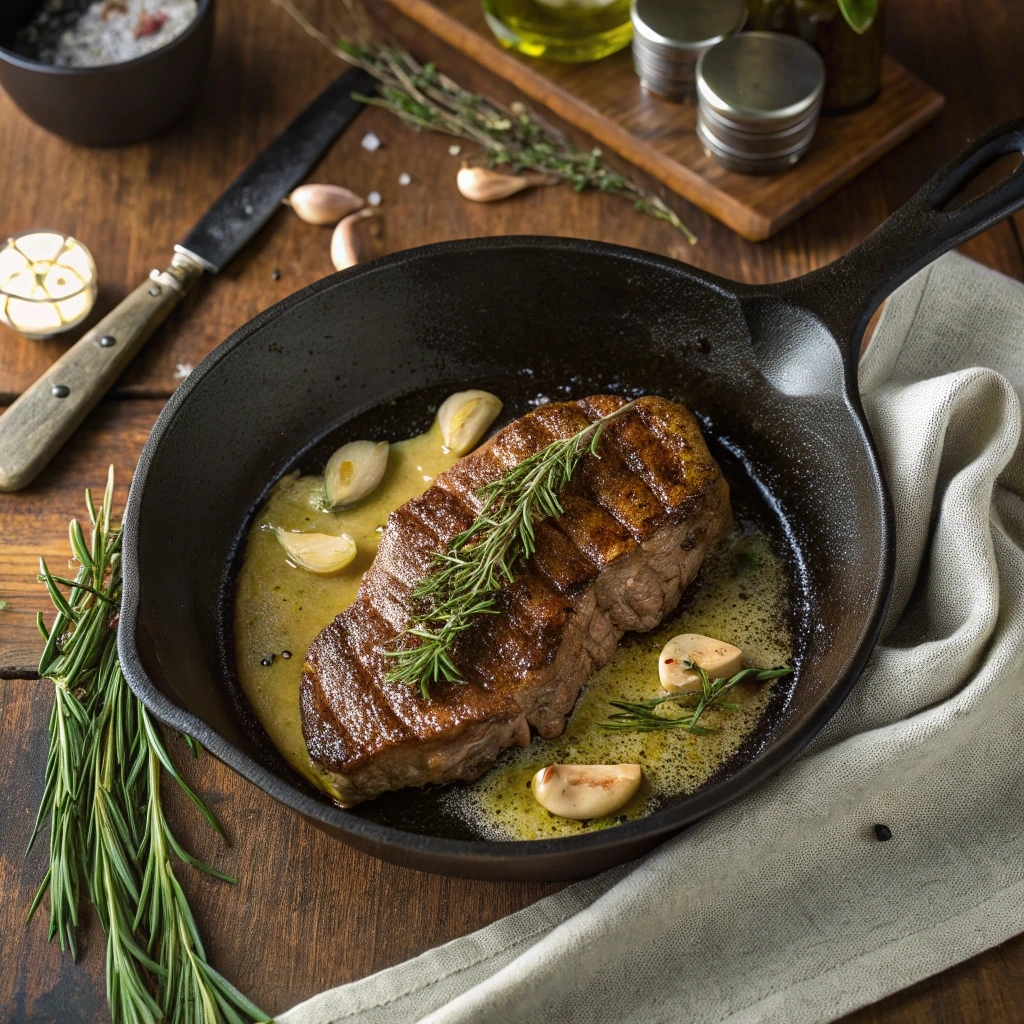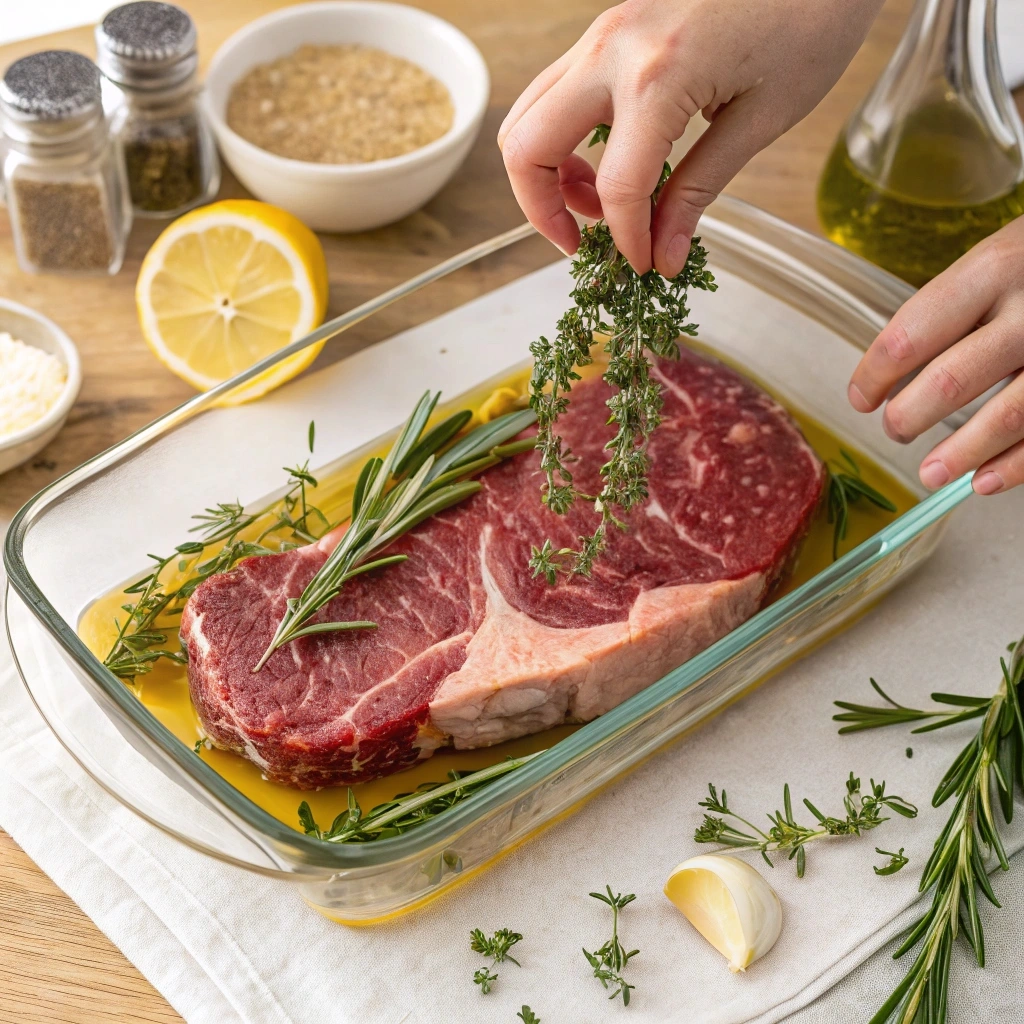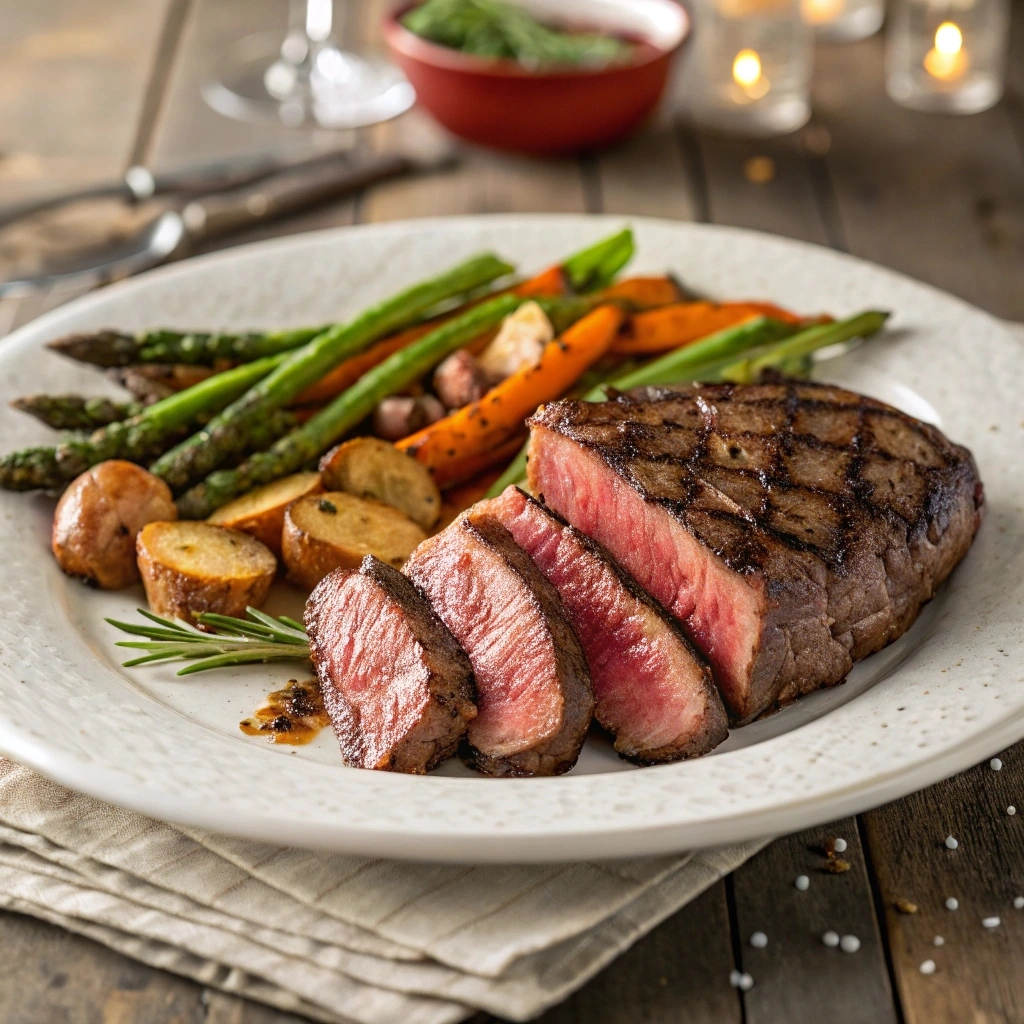When it comes to affordable yet flavorful cuts of beef, few options can rival chuck steak. Often overshadowed by premium cuts like ribeye or filet mignon, this humble yet versatile cut deserves a spotlight for its rich flavor, affordability, and adaptability in various recipes. Whether you’re an experienced chef or a home cook exploring the culinary world, chuck steak has something to offer.
This cut of beef, sourced from the cow’s shoulder region, is known for its robust flavor and excellent marbling. It’s particularly favored for recipes that benefit from slow cooking techniques. Unlike more tender options, it thrives with longer cooking methods that soften its connective tissues, delivering a texture that practically melts in your mouth.
Why Is Chuck Steak Popular?
Its popularity stems from a combination of affordability, flavor, and versatility. Chuck steak is significantly cheaper than prime cuts, yet it delivers an intense beefy taste. Additionally, it can be prepared in numerous ways, from hearty stews and braises to grilled or pan-seared dishes, making it a staple for families and food enthusiasts alike.
Overview of Its Versatility in Cooking
Chuck steak’s ability to transform under various cooking techniques is perhaps its greatest strength. It works beautifully in slow-cooked recipes like pot roast and beef bourguignon but can also hold its own when grilled or cooked in a skillet for dishes such as steak sandwiches or tacos. Its adaptability ensures that it can fit into almost any cuisine, providing endless culinary possibilities.
In the following sections, we’ll dive deeper into the characteristics of chuck steak, explore its nutritional value, and discover how to select, prepare, and cook it to perfection. Stay tuned for a culinary journey that will elevate this underrated cut of beef to its rightful place in your kitchen.
Understanding Chuck Steak
To truly appreciate chuck steak, it’s essential to understand its origins, anatomy, and why it stands out in the vast array of beef cuts. Moreover, its unique characteristics and nutritional benefits make it a cut worth exploring. Not only does chuck steak offer an impressive combination of taste and versatility, but it also provides excellent value for its price.
Where Does Chuck Steak Come From?
Anatomy of the Chuck Cut
The shoulder region of the cow, also known as the chuck primal, is a robust area characterized by well-developed muscles and connective tissue. This part of the beef is responsible for delivering cuts like the shoulder roast, flat iron steak, and chuck eye steak, each celebrated for their rich taste and texture. Among these options, one particular cut is notable for its adaptability in cooking and its bold flavor. Often derived from the shoulder roast, it is available in both bone-in and boneless varieties, depending on how it’s prepared by the butcher.
Characteristics of Chuck Steak
Chuck steak is recognizable by its deep red color, abundant marbling, and a texture that balances tenderness and chewiness. It’s a hardworking muscle, so it requires cooking methods that soften its fibrous structure, such as braising, stewing, or slow cooking. However, when cut properly and cooked with skill, it can be tender and juicy, making it a crowd-pleaser at the dinner table.
Nutritional Value
Protein, Fat, and Vitamins
Chuck steak is a nutrient-dense cut of beef, boasting high protein content that supports muscle repair and growth. It also contains essential fats, including omega-3 fatty acids, which contribute to brain and heart health. In addition, it is rich in vitamins and minerals like B12, zinc, and iron, essential for energy production and immune function.
Comparison with Other Cuts of Beef
When compared to premium cuts like ribeye or tenderloin, chuck steak offers a similar nutrient profile at a fraction of the cost. While slightly higher in fat, this contributes to its flavorful, juicy profile, making it an excellent alternative for those seeking both taste and value.
Why Choose Chuck Steak?
Affordable and Flavorful
One of the main reasons chuck steak remains a favorite is its affordability. It allows home cooks to enjoy a richly flavored beef cut without breaking the bank. Its marbled texture delivers an intense, beefy taste that outshines many leaner, more expensive options.
Ideal for Various Cooking Methods
Chuck steak’s versatility makes it a staple in kitchens worldwide. It excels in slow-cooking recipes, where its connective tissues break down into luscious tenderness. Yet, it can also shine when marinated and grilled, sliced thin for stir-fries, or simmered in broths and stews. Its adaptability ensures it fits seamlessly into an array of cuisines and cooking styles.
Different Types of Chuck Steak

Not all cuts from the chuck section are the same; this portion of beef offers a variety of options, each with distinct characteristics. Whether you’re planning to grill a tender piece or need a flavorful choice for braising, there’s a cut from the chuck that suits your recipe perfectly.
Boneless Chuck Steak
Boneless chuck steak is a versatile cut that is easy to work with in the kitchen. It is taken from the shoulder region and is prized for its rich marbling and robust flavor. Its absence of bone makes it simple to slice, dice, or cook whole, making it perfect for recipes like stir-fries, stews, or steak sandwiches. While it can be tougher than other cuts, marinating and slow cooking transform it into a tender and flavorful option.
Chuck Eye Steak
Known as the “poor man’s ribeye,” this cut is a prized selection from the shoulder region. It is located close to the ribeye and shares similar qualities, such as excellent marbling and a soft texture. Perfect for grilling or pan-searing, this steak offers an affordable option for those seeking the flavor and quality of premium cuts without the high price.
Denver Steak and Flat Iron Steak
Denver steak and flat iron steak are two exceptional cuts from the shoulder region. Sourced from the under-blade area, Denver steak is notably tender, making it ideal for grilling or broiling. In contrast, flat iron steak, taken from the shoulder blade, stands out for its rich marbling and buttery texture. Both cuts are incredibly versatile, working well in dishes like sizzling fajitas or elevated steak salads.
How to Choose the Right Chuck Steak for Your Recipe
Selecting the perfect cut from the chuck section depends on your preferred cooking method and flavor profile. For grilling, tender options like the chuck eye or Denver cut are excellent choices. If slow cooking is your plan, boneless shoulder cuts or flat iron steak work beautifully, as they become irresistibly tender when cooked low and slow. Pay attention to the marbling and thickness of the meat—cuts with more marbling generally yield superior flavor and retain more moisture during cooking.
How to Cook Chuck Steak
Cooking with this flavorful cut of beef is an art that transforms it into a true culinary delight. Whether you savor the melt-in-your-mouth tenderness of slow-cooked dishes or the smoky char of a grilled preparation, this cut adapts beautifully to various cooking methods.
Best Cooking Methods
Slow Cooking
Slow cooking is one of the most effective ways to bring out the tenderness and rich flavor of chuck steak. Cooking it at low heat over an extended period allows the connective tissue to break down, resulting in a succulent, fall-apart texture. Dishes like pot roast, beef stew, or shredded beef tacos thrive with this method.
Grilling
While traditionally seen as a less tender option, this shoulder cut can excel on the grill when prepared with care. Variants such as the chuck eye or Denver steak are particularly suited for this cooking method. A good marinade, combined with medium-high heat, can enhance the flavor and tenderness, making these cuts a fantastic choice for summertime BBQs.
Braising
Braising combines slow cooking and moist heat to deliver unparalleled results. Sear the chuck steak in a hot pan to develop a flavorful crust, then simmer it in a liquid such as beef broth, or tomato sauce. This method is perfect for hearty meals like beef bourguignon or Italian-style ragu.
Pan-Seared
For a quick yet satisfying preparation, pan-searing is an excellent choice. Use a heavy skillet to create a golden-brown crust while keeping the interior juicy. This method works best for thinner cuts of chuck steak, especially when paired with a flavorful sauce or gravy.
Step-by-Step Recipe
Ingredients:
- 2 lbs boneless chuck steak
- 1 cup beef broth
- 1 large onion, sliced
- 3 garlic cloves, minced
- 2 tbsp olive oil
- 1 tsp salt
- 1 tsp black pepper
- 1 tsp smoked paprika
- 2 cups vegetables (carrots, potatoes, or mushrooms)
Instructions:
- Prepare the steak: Pat the chuck steak dry and season generously with salt, pepper, and smoked paprika.
- Sear the steak: Heat olive oil in a skillet over medium-high heat. Sear the steak on both sides until golden brown, about 3 minutes per side.
- Assemble in the slow cooker: Place the sliced onion and garlic at the bottom of a slow cooker. Lay the seared steak on top, then add the vegetables. Pour the beef broth over everything.
- Cook low and slow: Cover and cook on low heat for 6–8 hours or until the steak is tender and easily shredded with a fork.
- Serve: Remove the steak and vegetables from the slow cooker. Serve with the pan juices for a comforting, flavorful meal.
Tips for Cooking Perfectly

Tenderizing Techniques
To maximize tenderness, consider using a meat mallet to break down the fibers or marinate the steak in acidic ingredients like vinegar, citrus juice, or buttermilk. This not only tenderizes but also infuses the steak with flavor.
Seasoning and Marinades
A good seasoning mix is key to enhancing chuck steak’s natural flavors. Create a marinade using olive oil, garlic, soy sauce, and herbs to infuse the steak with depth and richness. For dry rubs, spices like smoked paprika, cumin, and black pepper work beautifully.
Cooking Temperatures and Times
The ideal internal temperature for chuck steak depends on your cooking method. For slow-cooked dishes, an internal temperature of around 190°F ensures optimal tenderness. When grilling or pan-searing, aim for medium-rare (135°F) to medium (145°F) for the best balance of flavor and texture.
Popular Chuck Steak Recipes
Chuck steak’s adaptability shines in a variety of recipes that bring out its bold flavors and unique textures. From comfort food classics to international-inspired dishes, these popular recipes highlight the versatility of this cut.
Classic Braised Chuck Steak
Braised chuck steak is a timeless dish that delivers tender, flavorful meat every time. The steak is seared to perfection, then simmered in a mixture of beef broth, onions, and herbs until it becomes fork-tender. Serve it over creamy mashed potatoes or egg noodles for a hearty and satisfying meal.
If you’re a fan of hearty beef dishes, don’t miss this savory Philly Cheesesteak Meatloaf Recipe—a unique twist on a classic
Grilled Chuck Eye Steak with Garlic Butter
For a steakhouse experience at home, grilled chuck eye steak is an excellent choice. Marinate the steak in olive oil, garlic, and rosemary before grilling to medium-rare. Top it with a dollop of homemade garlic butter for an indulgent, savory finish. Pair with a side of roasted vegetables or a fresh green salad for a complete meal.
Chuck Steak Stir-Fry with Vegetables
Quick, colorful, and packed with flavor, this stir-fry is perfect for busy weeknights. Thinly sliced chuck steak is stir-fried with a medley of vegetables such as bell peppers, broccoli, and snap peas in a savory soy-ginger sauce. Serve it over steamed rice or noodles for a healthy and delicious dinner.
For another creative way to enjoy beef in a delicious meal, check out this mouthwatering recipe for Steak Pasta
Chuck Steak Tacos
Chuck steak tacos are a crowd-pleaser that’s perfect for gatherings or taco nights. Slow-cook the steak with spices like cumin, chili powder, and smoked paprika until it’s tender enough to shred. Load the shredded beef into warm tortillas and top with fresh salsa, guacamole, and a squeeze of lime for a zesty, flavorful bite.
Tips for Buying and Storing
To get the best out of chuck steak, it’s crucial to start with a quality cut and store it correctly to maintain its flavor and texture. Here’s how you can ensure your chuck steak is fresh, flavorful, and ready for your next recipe.
For advice on selecting the perfect cut for pasta dishes, explore this detailed guide on the Best Cut of Steak for Pasta.
How to Select Quality at the Store
When shopping for chuck steak, look for cuts with a bright, deep red color, indicating freshness. The steak should have even marbling throughout, as this fat enhances flavor and tenderness during cooking. Avoid cuts that appear grayish or have excessive liquid in the packaging, as these may be signs of older meat. If possible, ask your butcher for recommendations or a freshly cut piece.
Storing Chuck Steak Properly
Refrigeration Tips
If you plan to cook the chuck steak within a few days, it is important to store it in the refrigerator at a temperature of 32°F to 40°F. Additionally, keeping the steak in its original packaging or transferring it to an airtight container will help prevent exposure to air and moisture. Furthermore, for the best results, you should consume refrigerated chuck steak within 3 to 5 days.
Freezing Guidelines
For longer storage, chuck steak freezes exceptionally well. Wrap the steak tightly in plastic wrap or aluminum foil, then place it in a freezer-safe bag to prevent freezer burn. Label the package with the date of freezing, and store it at 0°F or below. Properly stored, chuck steak can last up to 6 months in the freezer while retaining its quality.
FAQs
What is a chuck steak good for?
Chuck steak is ideal for slow-cooked recipes like pot roast, stews, and braises, as the long cooking time tenderizes its fibrous texture. It’s also a great choice for dishes requiring bold beefy flavors, such as shredded beef tacos or hearty soups. Additionally, cuts like chuck eye steak work well for grilling and pan-searing when properly prepared.
Is chuck steak for grilling?
Yes, can be grilled, especially cuts like chuck eye or Denver steak, which are tender and flavorful. Marinating beforehand is recommended to enhance tenderness and flavor. Ensure you don’t overcook the steak; aim for medium-rare to medium for the best results.
What is the best way to cook a chuck steak?
The best cooking method depends on the cut and your desired outcome. Slow cooking and braising are excellent for creating tender, melt-in-your-mouth dishes. Grilling or pan-searing works well for thinner, well-marbled cuts like chuck eye steak, especially when paired with a flavorful marinade or seasoning.
What is another name for chuck steak?
This flavorful cut of beef is recognized under various names depending on the region and preparation. Common alternatives include shoulder steak, blade steak, and boneless shoulder cuts. The chuck eye, a specific portion from the same area, is often affectionately called the “poor man’s ribeye” due to its resemblance to the more premium ribeye in taste and marbling.
Conclusion
Recap of Key Points
Chuck steak is a versatile, flavorful, and affordable cut of beef that deserves a spot in your kitchen. From slow cooking and braising to grilling and pan-searing, its adaptability ensures it fits a variety of recipes and cooking styles. With a rich nutrient profile and bold taste, it offers incredible value compared to more expensive cuts.
Whether you’re a seasoned chef or a home cook exploring new options, this versatile beef cut opens up a world of culinary possibilities. Experiment with classic recipes like braised shoulder steak, grilled chuck eye, or innovative dishes like savory beef tacos. You’ll be amazed at how this underrated option can elevate your meals while staying budget-friendly.


1 thought on “Unlocking the Potential of Chuck Steak: Recipes and Tips”
Comments are closed.